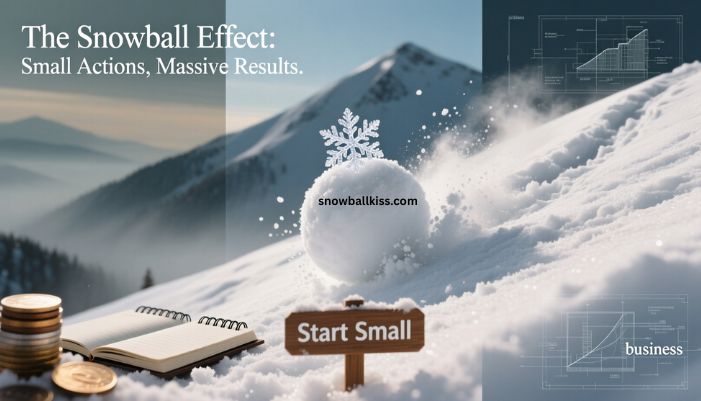Debt can feel scary. It makes life hard. You may worry about bills. You may feel stuck. But there is a simple way to fix it.
The debt snowball method helps you pay off debt one by one. You start small. You grow your payments over time. This helps you stay focused. You can see results fast. A debt snowball spreadsheet shows you your plan and tracks your progress.
This guide explains how it works. You will learn what to include, how to make your own spreadsheet, and how to stay on track.
What Is the Debt Snowball Method?
This method is easy. You list all your debts. Start with the one with the smallest balance. Pay the minimum amount on every debt, but put extra money toward the smallest one. When that one is paid off, take that money and add it to the next smallest debt.
You keep going until all debts are gone. Like a snowball rolling downhill, your payments grow bigger. You move faster as you go.
Here’s how it works:
- List all debts from smallest to largest balance
- Pay the minimum on all debts
- Put any extra money toward the smallest debt
- When that debt is gone, add that payment to the next one
- Keep going until all debts are paid
Why Use a Debt Snowball Spreadsheet?

A spreadsheet helps you stay on track. It keeps your debt organized. You can see how much you owe, what you have paid, and what’s next.
A spreadsheet helps you:
- List all your debts in one place
- See how much you still owe
- Track each payment
- Plan your next step
- Stay motivated
- Pay debt faster
You can make a simple spreadsheet with just a few columns. You don’t need special skills. If you can type and do simple math, you can make one.
What to Include in Your Debt Snowball Spreadsheet

You need to write down a few things for each debt.
Here is what to include:
- Debt Name: Who do you owe? Credit card, student loan, car loan, etc.
- Total Balance: How much do you owe right now?
- Minimum Payment: What is the smallest amount you must pay each month?
- Interest Rate: What is the yearly rate on the debt?
- Extra Payment: How much more can you pay?
- New Balance: This changes as you pay off debt.
- Payoff Date: When will the debt be gone?
- Status: Mark it paid when you finish
You can also add color or a chart to make it easy to follow. But start simple. Focus on tracking your money first.
How to Make a Debt Snowball Spreadsheet

You can use Excel, Google Sheets, or even a notebook. A digital sheet helps you update your numbers faster, but a paper copy works too.
Step 1: List All Debts
Put each debt in its own row. Start with the smallest balance. Order is important. Don’t sort by interest rate.
Step 2: Add Columns
Use columns for name, balance, minimum, interest, and status. Keep it clear.
Step 3: Add a Total
At the bottom, add up all the debt. This shows your starting point. You’ll see this number go down as you pay.
Step 4: Track Payments
Every time you make a payment, update the sheet. Subtract the payment from the balance. Update the new balance.
Step 5: Add a Monthly Tab (Optional)
You can have a new tab for each month. Or just use one tab and update the numbers. Do what works best for you.
Why This Method Works
The snowball method helps your brain stay focused. Paying off small debts feels good. You see wins early. That makes you want to keep going.
Even if a bigger debt has a higher interest rate, it’s harder to pay off. You may lose hope. With the snowball, you stay encouraged.
You also free up money each time a debt is gone. This makes the next payment even bigger.
Read- Snowball Sampling: A Simple Guide for Finding Hidden Research Participants
Example: How the Spreadsheet Works
Let’s say you have these debts:
- $300 credit card, $25 minimum
- $1,000 personal loan, $50 minimum
- $2,500 car loan, $150 minimum
You pay the minimum on each. That’s $25 + $50 + $150 = $225 total.
But you also have $100 extra each month.
You pay $125 to the credit card ($25 + $100). In 3 months, it’s gone.
Now take that $125 and add it to your personal loan payment. $125 + $50 = $175. The loan goes away faster.
Next, take that $175 and add it to the car loan. You now pay $325 per month. The car is paid off faster too.
This is how the snowball grows.
How to Stay on Track
The hardest part is staying with it. Here’s how to keep going.
1. Use Your Spreadsheet Often
Open it each time you pay bills. Keep it up to date.
2. Set a Reminder
Put a monthly note on your phone or calendar to check your spreadsheet.
3. Keep a Goal in Mind
Write down why you want to be debt-free. Save for a house? Travel? Less stress?
4. Celebrate Small Wins
Each time you pay off a debt, celebrate. You’re one step closer.
5. Don’t Add New Debt
If you keep borrowing, it’s hard to move forward. Try to live within your means while paying off debt.
Should You Use a Digital or Paper Spreadsheet?

Both are fine. Choose what works for you.
Digital:
- Easier to update
- You can use formulas
- Works on phone or computer
Paper:
- Good if you like writing by hand
- You can hang it on your wall
- Great for people who like visual tools
Try both. Use what helps you stay on track.
Where to Find Free Templates
You can build your own. Or search online for free templates. Many people share them for Excel or Google Sheets.
Look for templates that include:
- Debt name
- Balance
- Payment tracker
- Total debt
- Payoff dates
Avoid templates that are too complex. You want simple and clear.
Common Mistakes and How to Avoid Them
1. Mixing Methods
Stick to one plan. If you use snowball, don’t switch to another halfway through.
2. Forgetting to Update the Spreadsheet
Make it part of your routine. Each time you pay, update the sheet.
3. Only Paying the Minimum
Always try to add something extra to your smallest debt.
4. Using Credit While Paying Debt
Stop using credit cards if possible. It’s hard to pay off debt if you keep adding more.
5. Skipping Months
Don’t stop, even if it’s hard. Keep going, even with small payments.
Final Thoughts
Getting out of debt feels hard at first. But it gets easier. The debt snowball method helps you build momentum. You pay off one debt. Then another. Then another.
A simple spreadsheet keeps you organized. You know where your money is going. You see your progress. You stay motivated.
FAQs
What is a debt snowball spreadsheet?
It’s a tool that lists all your debts and shows how you’re paying them off, one by one.
Do I need Excel to use it?
No. You can use Google Sheets, Numbers, or even write it out on paper.
What if I have high-interest debt?
The snowball focuses on the balance, not the interest. You pay off the smallest debt first to build confidence. If you care more about interest, try the avalanche method.
How often should I update my spreadsheet?
Each time you make a payment. Or at least once a month.
Can I still use credit cards?
Try not to. The goal is to stop growing debt while you pay it off.
Can I do this with my partner?
Yes. You should. Working as a team helps you stay on the same page.


